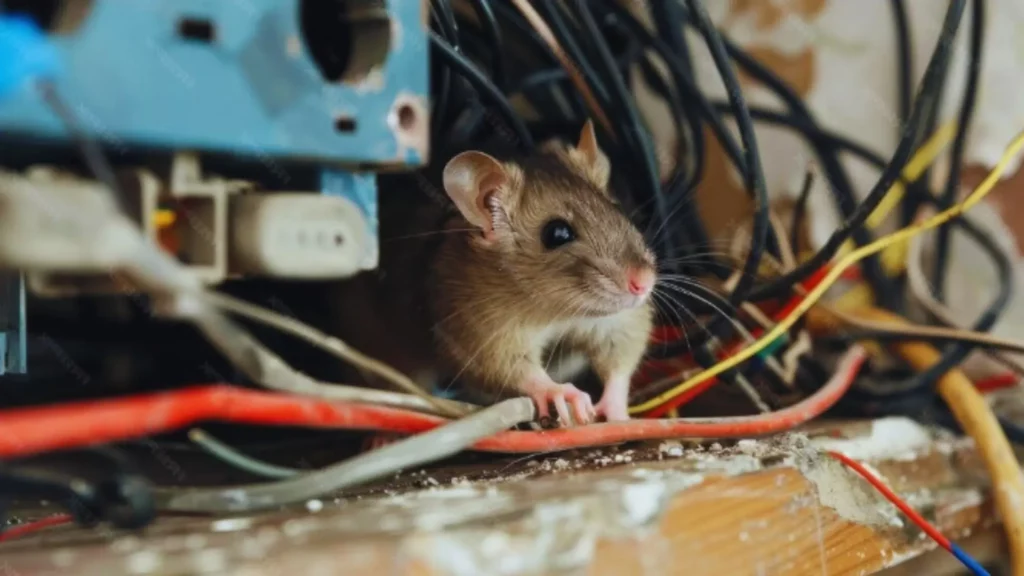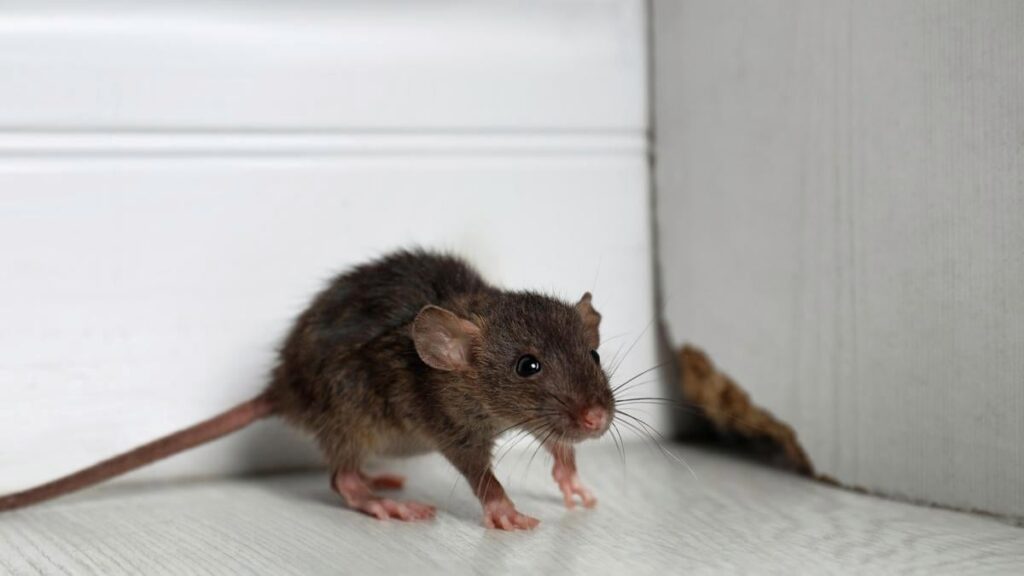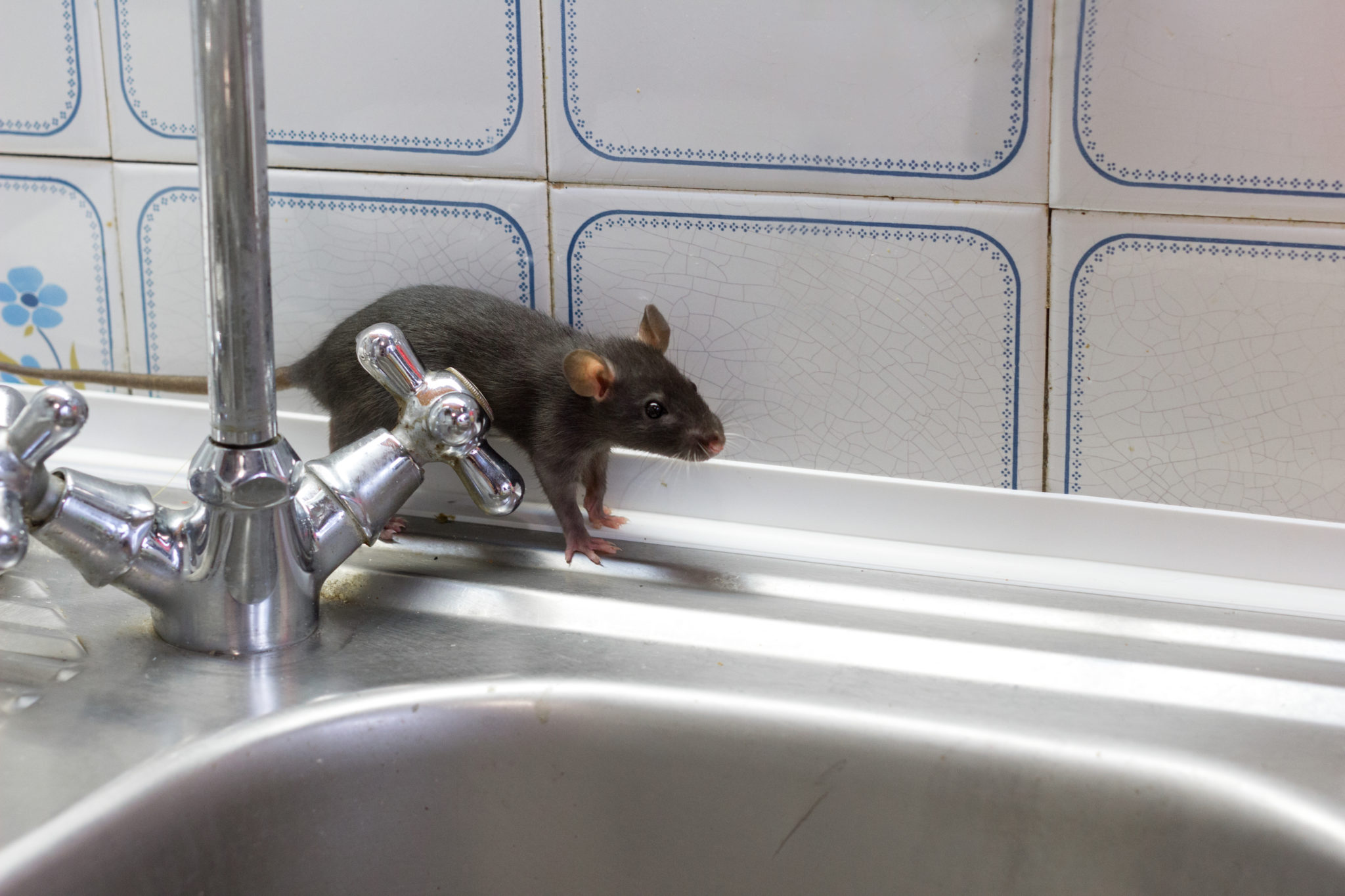What Are the Common Types of Rodents Found in Sydney Roof Cavities and Garages?
Sydney properties face threats from three primary rodent species: the Norway rat, roof rat, and house mouse that Sydney residents commonly encounter. Each species brings distinct challenges to mouse control that Sydney homeowners must address.
1. Norway Rat
The Norway rat (also called the brown rat) typically measures 20-25cm in body length with a thick, heavy build. These rodents prefer ground-level areas but will venture into garages and lower roof spaces when seeking shelter or food sources needing rat removal sydney.
2. Roof Rat
Roof rats are smaller and more agile, measuring 16-20cm with a slender body and exceptionally long tail. True to their name, these rodents excel at climbing and frequently inhabit roof cavities, ceiling spaces, and upper levels of buildings. Their climbing ability makes them particularly problematic for Sydney homes with accessible roof entry points.
3. House Mouse
The house mouse is the smallest of the three, reaching just 7-10cm in length. Despite their size, these rodents cause significant damage and reproduce rapidly. They adapt to various environments but show a strong preference for warm, enclosed spaces like garages, wall cavities, and roof insulation.
All three species are nocturnal and exhibit similar infestation behaviours:
- Establishing nests in insulation, cardboard, or shredded materials
- Creating regular travel routes along walls and beams
- Gnawing constantly to maintain tooth length
- Producing droppings near food sources and nesting sites
- Seeking shelter indoors during colder months or when outdoor food becomes scarce

Why Is It Crucial to Prevent Mice Infestations in Roof Cavities and Garages?
1. Health Risks Posed by Rodents
Rodent health risks in Sydney homes extend far beyond being just a nuisance. Mice carry dangerous pathogens that spread through their droppings, urine, and saliva, contaminating surfaces throughout your property. Here are some of the diseases they can transmit:
- Salmonella: This bacterium causes severe gastroenteritis, leading to symptoms such as diarrhoea, fever, and abdominal cramps.
- Hantavirus: Inhalation of Hantavirus particles can result in potentially fatal respiratory conditions like Hantavirus Pulmonary Syndrome (HPS).
- Leptospirosis: Transmitted through rodent urine, this disease affects kidneys and liver function, posing serious threats to household members and pets.
2. Property Damage Caused by Rodents
The damage inflicted by rodents can cost thousands in repairs annually. Their continuously growing incisors compel them to gnaw constantly on building materials, insulation, and wooden structures. This behaviour weakens structural integrity and creates entry points for moisture and other pests.
3. Fire Hazards from Rodent Activity
One of the most dangerous consequences of mice in roof cavities is the fire hazard posed by chewed electrical wiring. Exposed wires spark easily, particularly in dry roof spaces filled with insulation material. Insurance companies frequently cite rodent damage as a contributing factor in residential fires.
4. Contamination of Stored Items
Rodent contamination spreads rapidly through stored items in garages and roof spaces. Mice leave droppings wherever they travel—typically 50 to 80 pellets per day per mouse. These faecal deposits contaminate stored food, clothing, documents, and household items. The pathogens remain viable for weeks, creating ongoing health risks even after the infestation ends.
Urine trails and grease marks along walls harbour bacteria that become airborne when disturbed during cleaning.
How Can Homeowners Identify Signs of Mice Infestation in Their Roof Cavities and Garages?
1. Look for Mouse Droppings
Mouse droppings are the most obvious sign of rodent activity. These small, dark pellets typically appear near food sources, under sinks, in cupboards, or along walls where mice travel regularly. Fresh droppings look moist and dark, while older ones become dry and grey.
2. Check for Gnaw Marks
Gnaw marks on furniture, cardboard boxes, plastic containers, and electrical wiring indicate that rodents are present. Mice have teeth that grow continuously, so they need to chew constantly. Light-coloured wood with fresh gnaw marks shows recent activity, while darker marks suggest older damage.
3. Listen for Scratching Noises
Scratching noises at night often indicate that mice are moving through roof cavities and wall spaces. These sounds get louder during the evening when rodents are most active. Homeowners may hear scurrying, squeaking, or rustling sounds above ceilings or inside garage walls.
Additional Signs of Rodent Infestation
Other signs of a rodent infestation include:
- Grease marks along walls and skirting boards where mice repeatedly travel the same paths
- Nests made from shredded insulation, paper, fabric, or cardboard in hidden areas
- Urine stains visible under ultraviolet light, creating a musky smell
- Footprints or tail marks in dusty areas of garages or storage spaces
- Damaged food packaging with small holes chewed through containers
Identifying these warning signs early allows homeowners to address infestations before rodents establish large colonies.
What Are the Effective Steps for Mouse Control in Sydney Properties?
Successful mouse control in Sydney requires a systematic approach that addresses both immediate removal and long-term prevention. The process begins with understanding the scope of the problem before implementing targeted solutions.
1. Conducting a Thorough Inspection to Identify the Extent of the Infestation
A comprehensive inspection rodent infestation assessment forms the foundation of any effective control strategy. Professional technicians examine every potential entry point, nesting site, and activity zone throughout the property.
The inspection process reveals critical information about the rodent species present, their population size, and preferred pathways. Technicians check roof cavities for droppings, urine stains, and nesting materials whilst examining garage spaces for gnaw marks on stored items and structural elements. Small gaps around pipes, vents, and eaves receive particular attention as mice can squeeze through openings as small as 6mm.
Key areas assessed during inspection include:
- Roof cavity access points and insulation condition
- Garage door seals and wall penetrations
- Kitchen and pantry areas for food sources
- Plumbing entry points and utility lines
- External vegetation proximity to building structures
- Rubbish storage areas and compost bins
This detailed assessment determines whether the infestation is localised or widespread across multiple areas. The findings guide the selection of appropriate removal methods, identify priority sealing locations for rodent proofing Sydney, and establish a realistic timeline for treatment. Without this crucial first step, control efforts often prove ineffective as hidden entry points and secondary nesting sites remain unaddressed.
2. Safely Removing Mice Using Appropriate Methods.
What removal methods work best after completing an inspection for a rodent infestation? Safe rodent removal requires a strategic combination of trapping, baiting, and exclusion techniques tailored to your property’s specific situation.
Snap Traps and Live Traps
Traditional snap traps remain highly effective for catching individual mice in roof cavities and garages. Position them perpendicular to walls where droppings or grease marks appear. Live traps offer a humane alternative, allowing for relocation away from the property.
Bait Stations
Tamper-resistant bait stations provide controlled rodent elimination whilst protecting children and pets. Licensed pest control professionals strategically place these stations in high-activity areas identified during inspection.
Exclusion Techniques
Physical barriers prevent mice from accessing treated areas. Install rodent-proof mesh over vents, seal gaps around pipes, and block entry points with steel wool or caulking. This approach forms the foundation of effective rodent proofing Sydney properties.
Integrated Approach
Combining multiple methods delivers optimal results. Traps handle immediate populations whilst exclusion prevents new arrivals, creating a comprehensive mouse control Sydney strategy for long-term protection.
3. Sealing Entry Points to Prevent Future Infestations
Why does sealing entry points matter after safe rodent removal? Even the most thorough inspection rodent infestation treatment becomes ineffective if mice can simply return through unsealed gaps. Rodents squeeze through openings as small as a 10-pence coin, making comprehensive rodent proofing Sydney properties essential for long-term protection.
Critical areas requiring attention include:
- Gaps around pipes entering roof cavities and garages
- Cracks in foundations and exterior walls
- Ventilation openings without proper mesh screening
- Damaged weather stripping around doors
- Holes where utility lines enter the building
Professional rodent proofing uses materials mice cannot gnaw through, such as steel wool combined with caulking, copper mesh, or sheet metal. Expanding foam alone proves inadequate as rodents chew through it easily. Garage door seals deserve particular attention since worn rubber creates perfect entry points. Roof cavity access requires inspection for gaps in eaves, damaged tiles, and unsealed penetrations where plumbing or electrical conduits pass through walls.
For instance, if you notice that mice are coming in through a specific hole around your property, it’s crucial to address these entry points immediately to prevent future infestations.
4. Implementing Preventive Measures to Keep Mice at Bay
What ongoing actions prevent mice from returning after safe rodent removal? Homeowners must maintain consistent preventive practices that eliminate attractants and create an inhospitable environment for rodents.
1. Food Storage
Use airtight containers for all pantry items, pet food, and birdseed. Mice can chew through cardboard and plastic bags within minutes, making proper storage essential for rodent proofing Sydney properties.
2. Rubbish Management
Secure bins with tight-fitting lids and dispose of waste regularly. Leaving bins open overnight invites rodents to feast on food scraps and establish nearby nesting sites.
3. Vegetation Control
Trim tree branches at least one metre away from rooflines and keep shrubs pruned. Overgrown plants provide highways for mice to access roof cavities and garages undetected.
4. Leak Repairs
Fix dripping taps, clear blocked gutters, and address any moisture issues in garages or storage areas to eliminate water sources that attract thirsty rodents.
5. Regular Cleaning
Remove crumbs, spills, and clutter that shelter mice by vacuuming frequently, wiping down surfaces after meal preparation, and decluttering garages to reduce hiding spots during any inspection rodent infestation reveals.
5. Monitoring for Any Signs of Reinfestation After Treatment
How often should you check for returning mice after treatment? Regular monitoring should begin immediately after safe rodent removal and continue for at least 3-6 months. This vigilance helps detect any remaining mice that may have avoided initial treatment or new rodents attempting to enter the property.
Key monitoring activities include:
- Conducting weekly inspection rodent infestation checks in roof cavities and garages during the first month
- Examining previously identified entry points for new gnaw marks or droppings
- Listening for scratching sounds during quiet evening hours
- Checking bait stations and traps for activity
- Inspecting areas where food is stored for signs of tampering
Place monitoring traps in strategic locations even after the main infestation appears resolved. These devices serve as early warning systems, alerting you to potential reinfestation before it becomes severe. Document your findings in a simple log, noting dates and locations of any suspicious activity.
Professional rodent proofing Sydney services often include follow-up visits to verify treatment success and adjust strategies if needed.
When Should Property Owners Seek Professional Pest Control Services for Mouse Problems?
Property owners should contact professional pest control Sydney services when DIY methods fail to resolve the infestation or when mice activity persists after initial treatment attempts. Persistent scratching noises in roof cavities, continued sightings of droppings, or evidence of structural damage indicate the need for expert intervention.
Large-scale infestations affecting multiple areas of a property require immediate professional attention. When mice have established nests in hard-to-reach locations like roof cavities or within wall voids, licensed pest technicians possess the specialised equipment and knowledge to access these spaces safely and effectively.
Benefits Of Hiring Licensed Pest Control Professionals For Mouse Control In Sydney
Licensed pest technicians bring extensive training in rodent behaviour and biology, enabling them to identify species-specific patterns and implement targeted control strategies. Their expertise allows for accurate assessment of infestation severity and identification of all potential entry points that untrained eyes might miss.
Professional services provide access to commercial-grade treatment options unavailable to the general public, including:
- Advanced bait formulations designed for rapid results
- Professional-grade trapping systems suited to various property layouts
- Specialised rodent-proofing materials and installation techniques
- Monitoring equipment to track rodent activity patterns
Rodent treatment costs typically range from $150 to $250 for residential properties, varying based on property size and infestation severity. This investment includes comprehensive inspection, treatment application, and follow-up visits to verify eradication success.
Licensed professionals implement long-term prevention strategies that address root causes rather than symptoms alone. They provide detailed reports documenting treatment methods, materials used, and customised maintenance recommendations to prevent future infestations in roof cavities and garages.
Typical Cost Range For Rodent Treatment By Pest Control Experts In Sydney.
How much does professional rodent control cost in Sydney? Licensed pest technicians typically charge between $150 and $250 for residential rodent treatment services. The final price depends on your property’s size and the severity of the infestation.
Larger homes with multiple entry points or extensive roof cavity infestations require more comprehensive treatment, pushing costs towards the higher end of the spectrum. Properties with minor mouse problems in a single garage or roof space usually fall at the lower end of the pricing range.
Professional pest control Sydney services provide value beyond the initial treatment cost. Licensed technicians conduct thorough inspections, implement targeted removal strategies, and establish long-term prevention measures that DIY methods cannot match. Property owners should seek professional help when facing severe infestations or when home remedies have failed to resolve the problem.
Most pest control experts offer transparent quotes after an initial assessment, allowing homeowners to understand exactly what rodent treatment costs will apply to their specific situation before committing to the service.
How Can Homeowners Maintain a Rodent-Free Environment in Their Roof Cavities and Garages?
Maintaining a rodent-free property requires consistent vigilance and proactive home maintenance practices. Sydney homeowners can significantly reduce the risk of mice returning to roof cavities and garages by implementing strategic prevention measures.
1. Regularly Inspect Potential Entry Points And Seal Them Off Immediately If Found Opened Or Damaged
Monthly inspections of vulnerable areas prevent small gaps from becoming major access routes for mice. Property owners should examine roof eaves, ventilation grills, garage door seals, pipe penetrations, and wall cavities where utilities enter the building. Mice can squeeze through openings as small as a pencil width, making thorough checks essential.
When gaps or damage appear, immediate sealing with appropriate materials stops rodents before they establish nesting sites. Steel wool combined with caulking works effectively for small holes, whilst rodent-proof mesh suits larger openings around vents and roof joints. Garage door rubber seals deteriorate over time and require replacement when worn or cracked.
Key areas requiring regular attention include:
- Roof tile gaps and damaged flashing
- Wall cavities where plumbing or electrical conduits enter
- Garage door bottom seals and side weather stripping
- Air conditioning unit penetrations
- Weep holes (which should have appropriate mesh covers)
- Damaged roof vents or exhaust fan housings
Seasonal weather changes in Sydney can shift building materials, creating new entry points that weren’t previously accessible. Spring and autumn inspections prove particularly valuable as temperature fluctuations cause expansion and contraction in building structures. Documenting inspection findings helps track problem areas that may need professional rodent proofing solutions.

2. Practising Good Hygiene Habits To Minimise Attractants For Mice Such As Keeping Food Stored Properly And Managing Waste Effectively.
How do hygiene practices prevent mice from entering roof cavities and garages? Good hygiene eliminates the food sources and shelter that attract mice to properties in the first place. Rodents seek out environments where they can easily access sustenance and nesting materials.
Role Of Good Hygiene Practices In Deterring Rodents From Invading The Property
Implementing proper food storage and waste management creates an inhospitable environment for mice:
- Store all food in airtight containers made of glass or heavy-duty plastic to prevent mice from detecting food odours
- Clean up spills and crumbs immediately in kitchens, garages, and storage areas where food may be kept
- Keep rubbish bins tightly sealed and dispose of waste regularly to avoid attracting rodents
- Remove pet food bowls after feeding times rather than leaving them out overnight
- Declutter garages and storage spaces to eliminate potential nesting sites made from cardboard boxes or fabric
These rodent prevention tips Sydney homeowners can implement require minimal effort yet significantly reduce the likelihood of mice establishing themselves in roof cavities and garages through ongoing maintenance practices.
3. Keeping The Surroundings Well-Maintained By Trimming Vegetation And Repairing Any Leaks That Could Provide Shelter Or Water Source For Mice To Thrive In Nearby Areas.
How does property maintenance prevent mice from establishing themselves near your home?
Overgrown vegetation and water sources create ideal conditions for mice to nest and thrive before entering your property. Regular trimming of bushes, trees, and shrubs eliminates hiding spots and removes branches that provide direct access to roof cavities.
What specific maintenance tasks reduce rodent attraction?
- Trim vegetation at least 30cm away from walls and roof lines
- Repair leaking taps, pipes, and gutters to eliminate water sources
- Clear debris piles including wood stacks, garden waste, and unused materials
- Maintain gutters to prevent water pooling that attracts rodents
- Fix roof damage promptly to block potential entry routes
These rodent prevention tips Sydney experts recommend form part of comprehensive home maintenance rodents strategies. Ongoing maintenance practices are essential for keeping roof cavities and garages free from mice, creating an inhospitable environment that discourages infestations before they begin.
Related : Mice Control Sydney: What Attracts Mice to Suburban Homes the Most?





